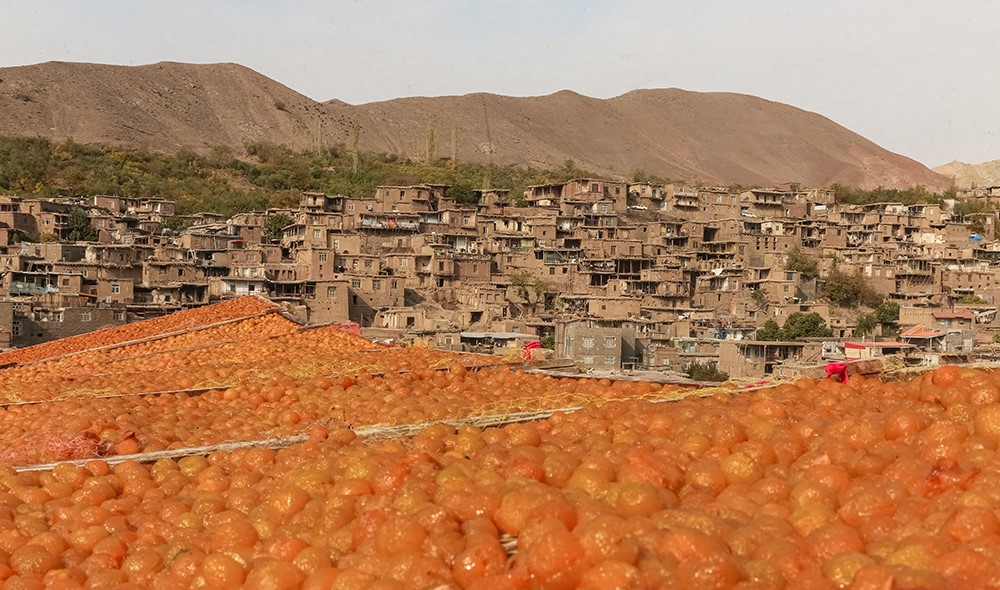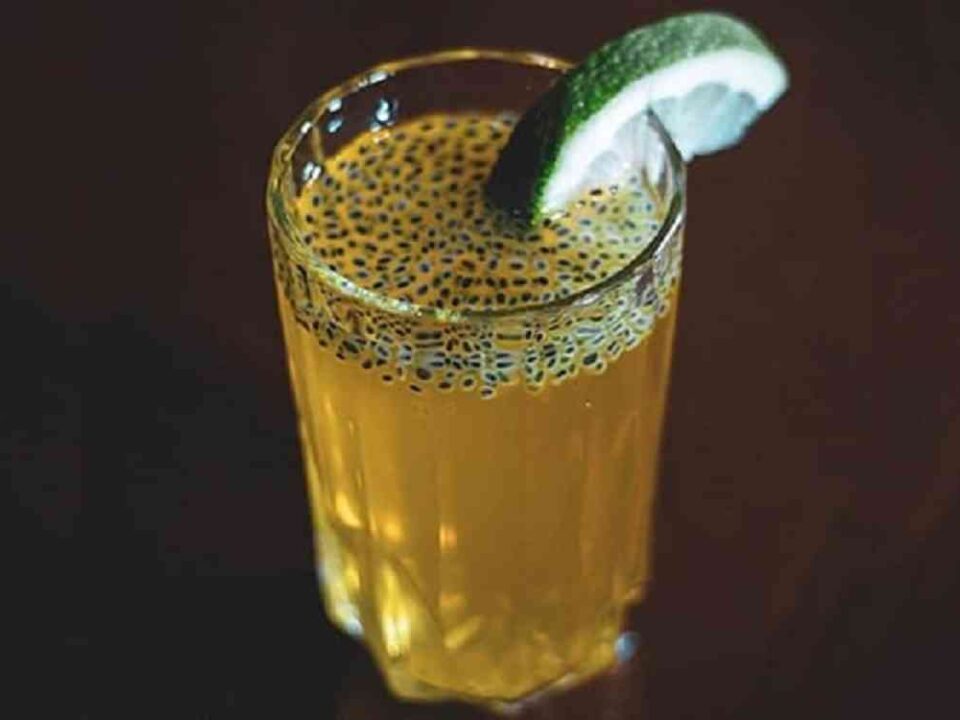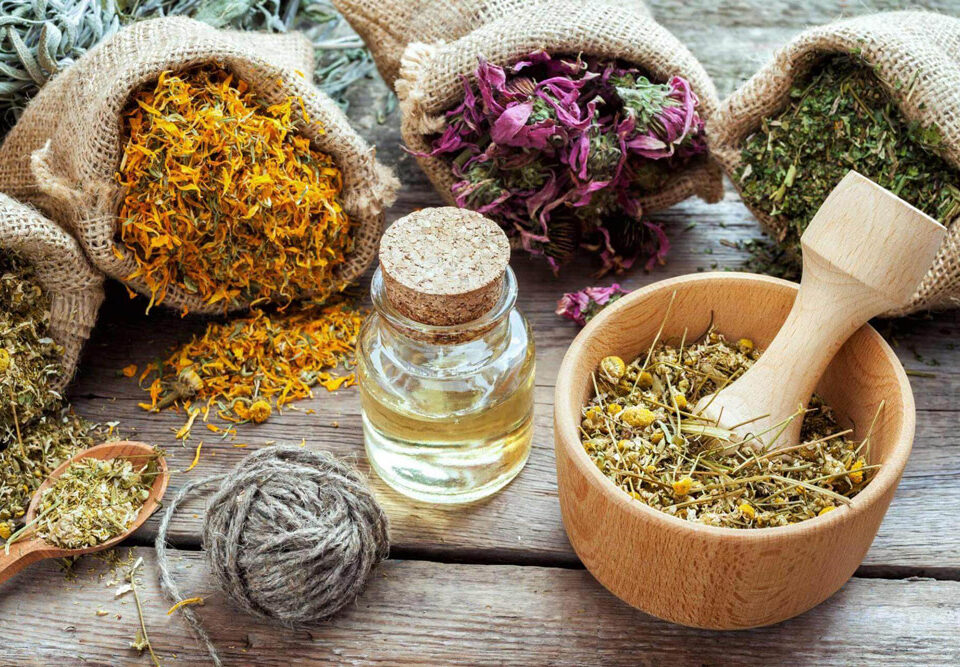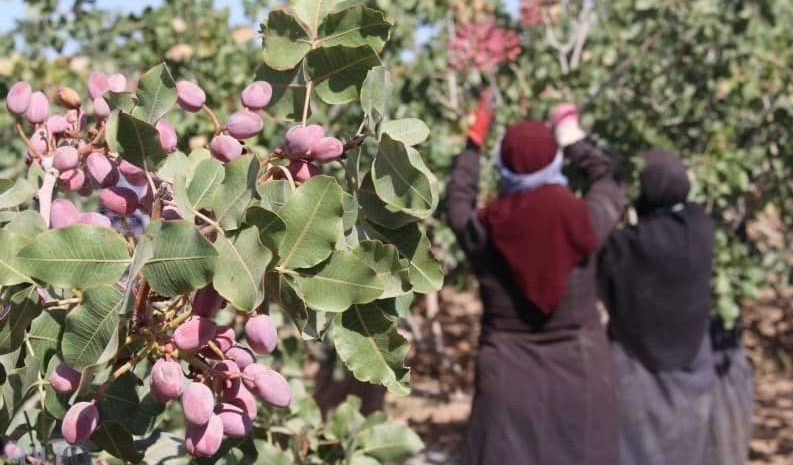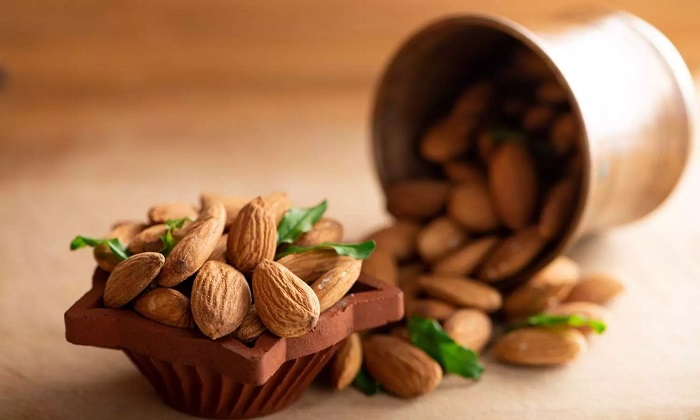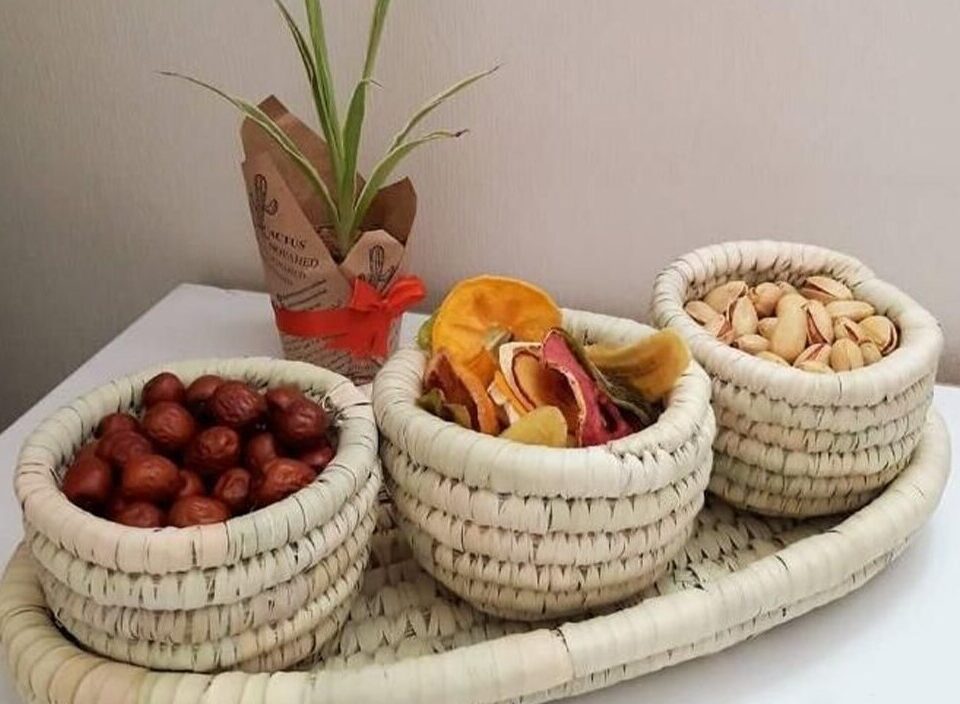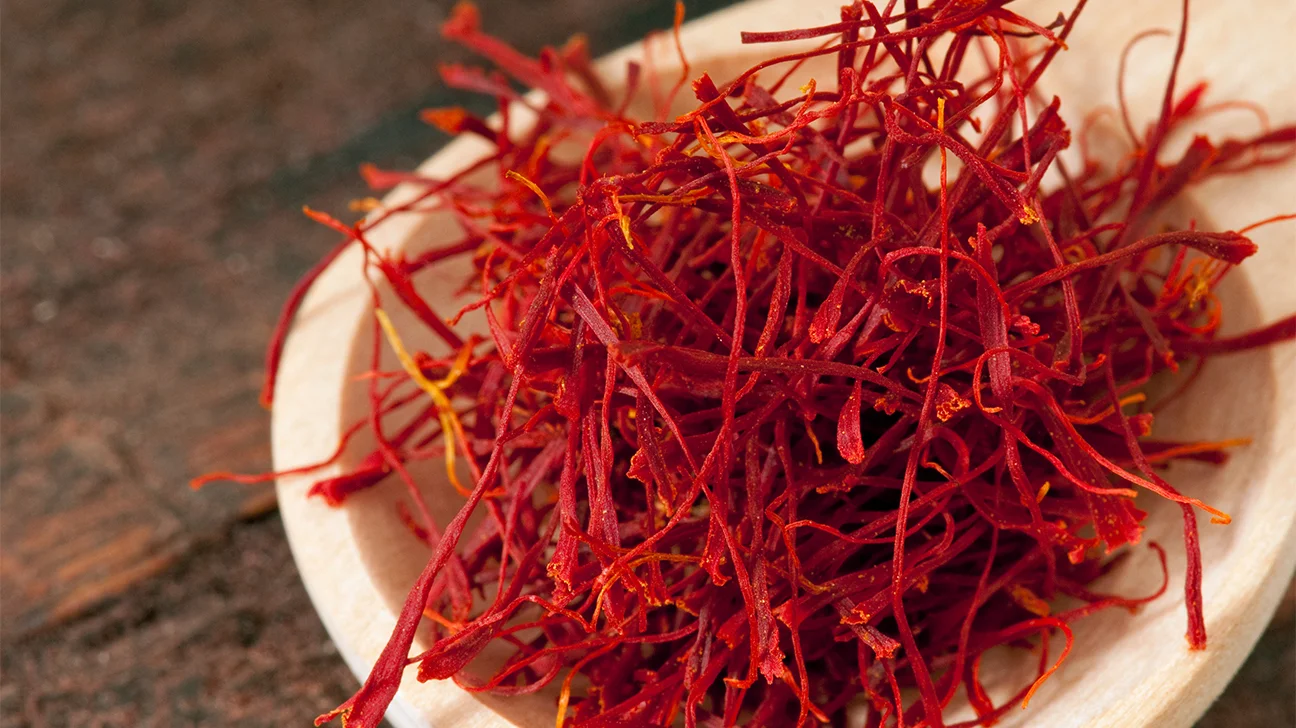
Benefits of Iranian Saffron
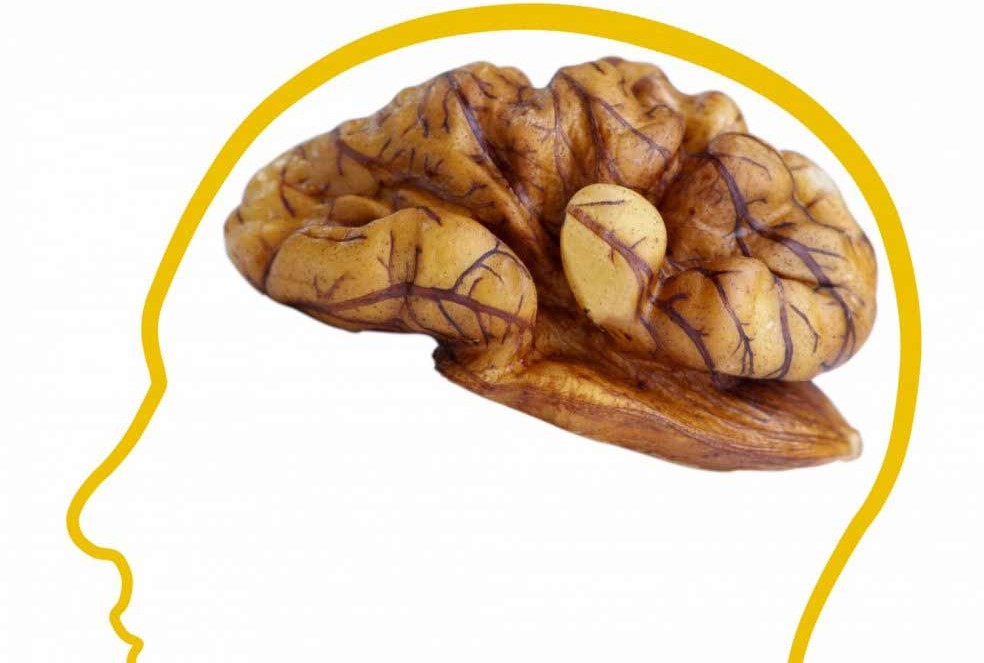
How Nuts Can Boost Brain Function
Traditional Methods and Techniques
Iran has a long history of drying fruits as a way to preserve them for use throughout the year. Dried fruits are a staple of Iranian cuisine, celebrated not only for their flavor but also for their nutritional value. The process of drying fruits in Iran dates back thousands of years, and many of the traditional methods are still used today. These techniques rely on natural drying processes, passed down through generations, and are a testament to the country’s rich agricultural and culinary heritage. Here’s an exploration of the traditional methods and techniques used for drying fruits in Iran.
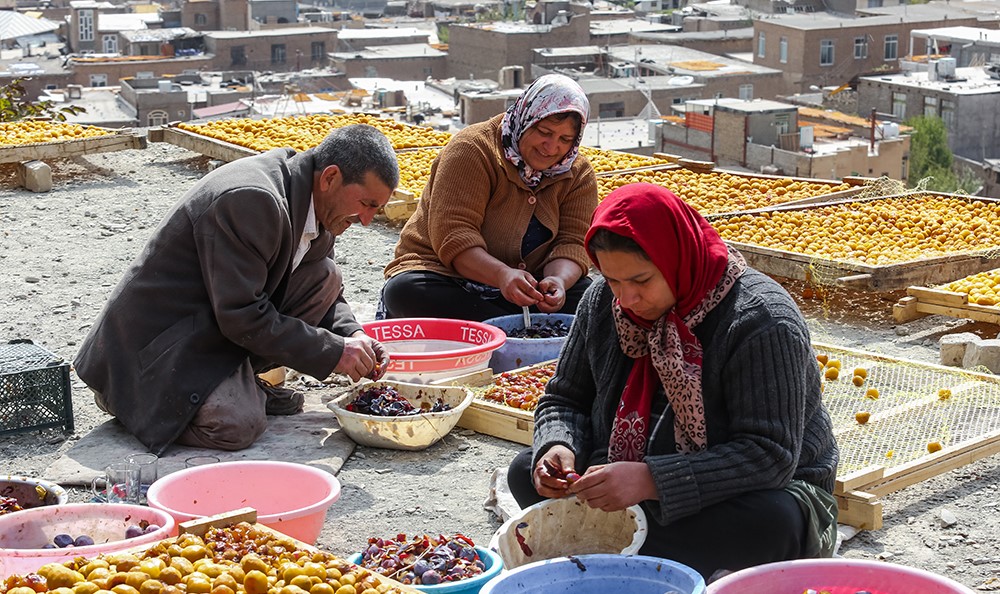
The Art of Drying Fruits in Iran
1. Sun Drying
One of the oldest and most common methods of drying fruits in Iran is sun drying, a process that uses the natural heat of the sun to dehydrate fruits. This technique has been practiced for centuries, especially in rural areas where the climate is ideal for drying fruits under the sun.
Key Fruits Dried Using This Method:
- Apricots
- Figs
- Grapes (to make raisins)
- Mulberries
- Persimmons
Traditional Sun Drying Process:
- Selection: Fresh, ripe fruits are selected for drying. The fruit must be fully mature, as underripe or overripe fruits do not dry well.
- Cleaning and Preparation: Fruits are washed thoroughly to remove any dirt or debris. For some fruits, like apricots, the fruit is halved and the pit is removed. Other fruits, like figs and grapes, are left whole.
- Blanching or Pretreatment (Optional): Some fruits, like apricots or peaches, may be briefly dipped in boiling water to loosen the skin or treated with lemon juice or sulfur dioxide to prevent oxidation and help maintain their bright color.
- Sun Drying: The fruits are spread out on large flat trays made of wood, reed, or metal. These trays are placed in the open air under direct sunlight, allowing the fruits to slowly lose moisture over several days.
- Turning and Monitoring: The fruits are periodically turned to ensure even drying and to prevent spoilage. During this time, care is taken to protect the fruits from insects and dust.
- Harvesting: Once the fruits have lost most of their moisture and have shrunk in size but are still pliable, they are removed from the trays and stored in airtight containers for future use.
Advantages of Sun Drying:
- Natural and energy-efficient: Sun drying requires no electricity or artificial heat, making it an environmentally friendly process.
- Enhanced flavor: Fruits dried under the sun often have a more concentrated and rich flavor due to the slow dehydration process.
Challenges:
- Sun drying is highly dependent on weather conditions and can take several days or even weeks, depending on the fruit and climate. Additionally, sun-dried fruits are exposed to dust and insects, so they must be protected with nets or fine mesh covers.
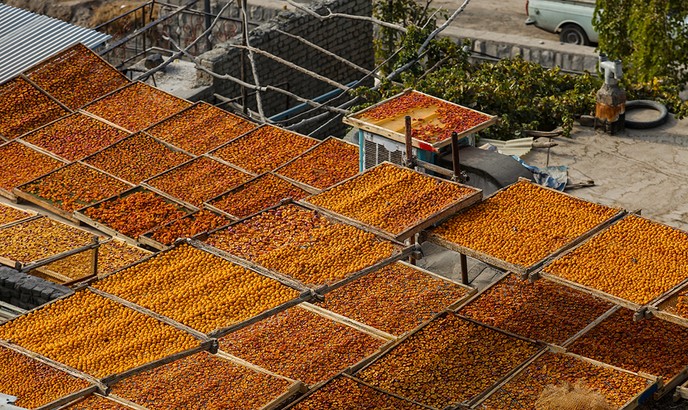
The Art of Drying Fruits in Iran
2. Shade Drying
For fruits that are more delicate or that risk losing their color and flavor when exposed to direct sunlight, shade drying is a preferred method. This technique is often used for fruits like herbs and berries, which require slower drying in a cooler environment.
Key Fruits Dried Using This Method:
- Herbs (such as mint and thyme)
- Berries (such as barberries and goji berries)
- Plums
Traditional Shade Drying Process:
- Selection and Preparation: Fruits are cleaned and sorted just as they would be for sun drying.
- Hanging or Spread Drying: Fruits are either hung from string or spread on racks in a shaded, well-ventilated area. Shade drying is often done in open-air courtyards or under tree canopies to ensure the fruits dry slowly without exposure to direct sunlight.
- Turning and Monitoring: As with sun drying, fruits are regularly turned or repositioned to ensure even drying. The slow-drying process helps preserve the fruit’s color, flavor, and nutrients.
- Completion: Once the fruits have reached the desired dryness, they are collected and stored.
Advantages of Shade Drying:
- Preserves delicate flavors and colors: Shade drying prevents fruits from browning or losing their natural flavor due to exposure to the intense heat of the sun.
- Slow, controlled process: Shade drying allows for more control over the drying process, ensuring that fruits dry evenly without the risk of overexposure.
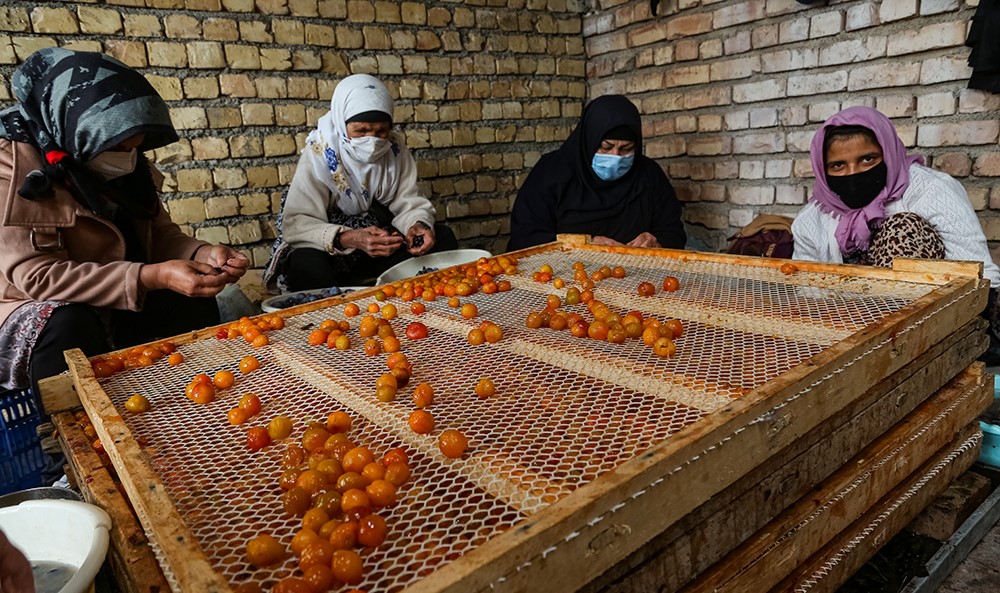
The Art of Drying Fruits in Iran
3. Kangina Drying (Sun-Drying in Traditional Mud Rooms)
In some regions of Iran, particularly in rural areas, fruits are dried using Kangina, a traditional method that involves drying fruits in specially designed mud rooms. These rooms are built with natural materials like mud and clay, providing a controlled environment for drying.
Key Fruits Dried Using Kangina:
- Dates
- Figs
- Grapes
- Apricots
Traditional Kangina Process:
- Design of the Room: Kangina rooms are constructed with small ventilation holes that allow air to flow in and out while protecting the fruit from dust, insects, and harsh sunlight.
- Preparation of Fruits: Fruits are cleaned and prepared as in the sun-drying process, with some fruits being pitted or halved.
- Drying: Fruits are placed on racks or hung from strings in the Kangina, where the air circulating through the room gradually dries them. This method relies on natural airflow and indirect heat.
- Completion: Once the fruits are dried to the desired consistency, they are collected and stored in cool, dry places.
Advantages of Kangina Drying:
- Controlled environment: The mud walls of the Kangina room regulate temperature and humidity, providing an ideal environment for drying fruits.
- Protects from contaminants: This method minimizes exposure to dust, insects, and other contaminants, resulting in cleaner, higher-quality dried fruits.
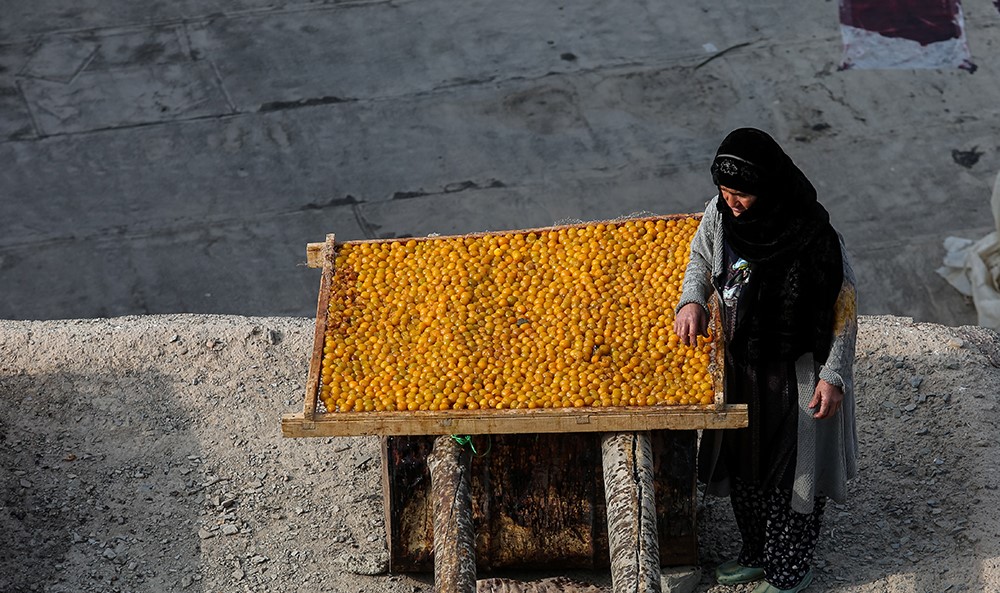
The Art of Drying Fruits in Iran
4. Sulfur Drying (Sulfur Treatment for Certain Fruits)
While not as widely used today due to health concerns, sulfur drying was traditionally employed in Iran to help preserve the color of certain fruits, particularly apricots and peaches. The sulfur treatment prevents oxidation, which can cause fruits to darken during drying.
Traditional Sulfur Drying Process:
- Preparation: Fruits are cleaned, halved, and pitted as needed.
- Sulfur Treatment: The fruits are placed in a chamber where they are exposed to sulfur fumes for several hours. This treatment helps the fruit retain its bright color and prevents browning.
- Sun Drying: After sulfur treatment, the fruits are sun-dried or shade-dried as usual.
Advantages:
- Prevents discoloration: Sulfur treatment is highly effective at preserving the natural color of fruits like apricots, keeping them vibrant and appealing.
Concerns:
- Health risks: Due to potential health risks associated with sulfur dioxide, such as allergic reactions in some individuals, this method has become less popular, and many producers now opt for natural drying methods without sulfur treatment.
5. Modern Methods: Solar Dryers and Electric Dehydrators
In addition to traditional methods, modern solar dryers, and electric dehydrators are increasingly used to dry fruits in a more controlled and efficient manner. These devices are particularly helpful in urban areas where space and weather conditions may not be conducive to traditional sun drying.
Solar Dryers:
- Solar dryers use solar energy to dehydrate fruits in an enclosed space. They are designed with transparent covers that capture sunlight and increase the temperature inside, speeding up the drying process while protecting fruits from contamination.
- Solar dryers are eco-friendly and more efficient than traditional sun drying, reducing drying times and minimizing exposure to external contaminants.
Electric Dehydrators:
- Electric dehydrators provide a consistent, controlled heat source, allowing for year-round drying of fruits regardless of weather conditions.
- Dehydrators are typically used for smaller batches of fruit and allow for more precise control over temperature and drying time, resulting in uniform dryness and texture.
Advantages of Modern Methods:
- Speed and consistency: Modern drying methods are faster and offer more consistent results, making them ideal for commercial production or home use.
- Protection from external factors: Solar dryers and dehydrators protect fruits from insects, dust, and fluctuating weather conditions.
Conclusion
The art of drying fruits in Iran is deeply rooted in tradition, with methods like sun drying, shade drying, and Kangina drying still widely used today. These techniques, which rely on natural processes, produce high-quality dried fruits with rich flavors and nutritional value. Modern methods, such as solar dryers and electric dehydrators, offer more control and efficiency, but the traditional techniques continue to be cherished for their authenticity and simplicity. Whether you’re enjoying sun-dried apricots or Kangina-dried dates, Iranian dried fruits are a testament to the country’s rich agricultural heritage and the enduring art of food preservation.

